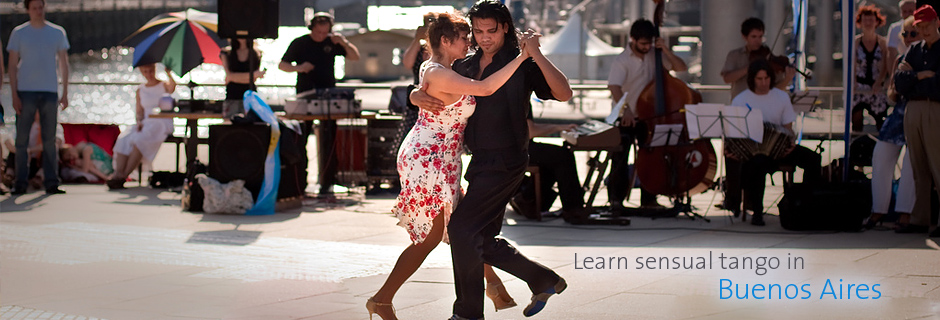
Buenos Aires Travel Guide: History of Buenos Aires
Many do not know that this Latin America capital city was founded twice. In 1536, Spanish conquistador Pedro de Mendoza established the settlement as Ciudad de Nuestra Señora Santa María del Buen Ayre (City of Our Lady Saint Mary of the Fair Wind) in what today is the district of San Telmo. Unfortunately, his new city was short-lived as a result of the attacks of indigenous tribes who forced the settlers out of the region, leaving it abandoned until a second Spanish explorer, Juan de Garay, landed on the port once more in 1580. Garay gave the port of the new settlement a similar name - Puerto de Santa Maria de los Buenos Aires – and thus the capital was permanently established.
The new city thrived as a hub of illegal trade for the region that today contains present-day Argentina, Uruguay, Paraguay and some of Bolivia. During the 17th and 18th centuries, all official trade with Spain had to be made through Lima so for years Buenos Aires thrived in contraband trade until Spain finally made the city an open port in the late 1700s. Still, Porteños feeling the need for liberation from Spanish rule eventually revolted in May of 1810 – as a secondary effect of British invasions against the colony left the city to defend itself when Spain abandoned it - and established a temporary government after they expelled the Spanish Viceroy. Formal independence eventually came in 1816.
19th century Buenos Aires can be characterized as politically unstable as the country was divided between Unitarians who preferred a strong central government while Federalists wished for autonomy in the provinces. When Federalist Juan Manuel de Rosas did rise to power in 1829, the first Latin America secret police – the Mazorca – made it their mission to persecute the Unitarians who had not fled the city. Thankfully by 1852, Rosas was ousted from power and the first Argentine constitution was ratified in 1853.
During these tumultuous years, the city went through more many political changes as from 1853 and 1860 it became the capital of the seceded State of Buenos Aires. For years after that the status was debated and fought over until finally in 1880, the capital became federalized and a seat of government, as the Mayor was appointed by none other than the President.
Economically, the city prospered during the second half of the 19th century with the region’s fertile pampas providing a great deal of produce and railroad construction business increasing the demand of raw materials to the city’s factories. New railroads also meant an increase in the sale of leather as now the port city was more easily connected to the rural Argentine lands where cattle ranches thrived.
The beginning of the 20th century saw in influx in European immigrants to Buenos Aires, most especially Spanish and Italian immigrants, along with residents of Argentina’s provinces and other bordering countries. To accommodate room for some of these groups, villas miserias (shantytowns) began popping up around the city’s main industrial areas. This image of a more downtrodden Buenos Aires was an extreme difference to the supposed affluent appearance of the city that during this time became a cosmopolitan capital to rival its European brother, and now housing the world famous Colón Theater, a top opera venue.
1940’s Buenos Aires saw the rise in power of Juan Perón who reached the presidency in 1946 with liberal ideas. He saw the need to improve education in the country and support the working class. He and his famous wife Evita, who also become a darling of the city’s and country’s blue-collared citizens thanks to her championing for labor rights and woman’s suffrage, were eventually ousted from power by forces within his government after a failed coup d’état that started as one of Buenos Aires’ darkest days - June 16 1955 - when the Plaza de Mayo was bombed and 364 civilians were killed. They would succeed three months later in attaining power.
Terror characterized 1970’s Buenos Aires with citizens fearing for their lives if they rebelled against the military communist government that rose to power after a military coup that overthrew vice president Isabel Perón. Jorge Rafael Videla led the coup and the resulting “Dirty War” where the ruthless government kidnapped and killed opponents to their regime. These unfortunate citizens became known as the desaparacidos (the disappeared) as their deaths were never reported, leaving many families wondering what became of their loved ones. Today, mothers of these victims silently march Plaza de Mayo every week in memory of their children who lost their lives during unjust times in Buenos Aires.
Raúl Alfonsín became president in 1983 and ended the military dictatorship, quickly bringing the leaders of the “Dirty War” into questioning and asking for accountability on the estimated 30,000 desaparacidos. Trials began in 1985 and many top generals, including then President Jorge Vidal, were convicted and sentenced to life imprisonment.
An economic crisis characterized the early 21st century in Buenos Aires, with the economy collapsing in 2001 after an inflated exchange rate between the Argentine Peso and the US dollar led to a devastating recession. Unemployment eventually reached 25% and many businesses and citizens went bankrupt.
Fortunately today, Buenos Aires is politically and economically stable and has become a fascinating capital to visit not just within Latin America but around the world.
We do have the lowest prices. We will meet or beat any internet published rates from companies outside Argentina
for
all package tours. All HOTELS and TOURS are based on US standards. No late booking fees.
We have the best testimonials. Our professional and expert staff is at your service and will reply to any request
within 24 hours. While traveling in Argentina you will have access to our local 24/7 emergency number.

